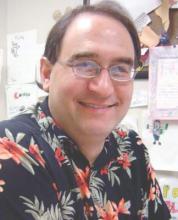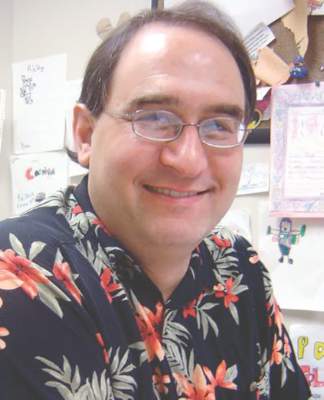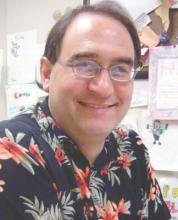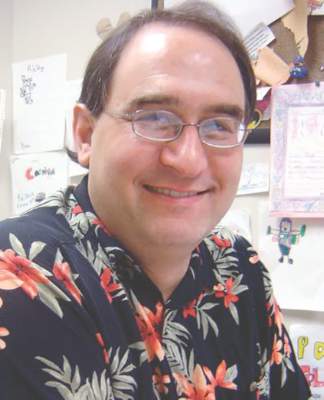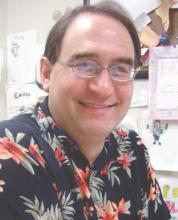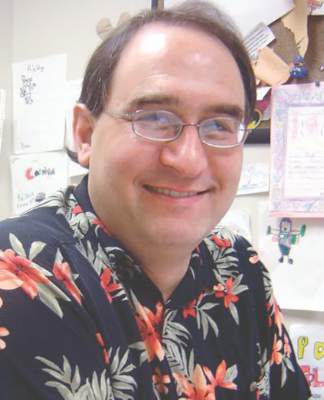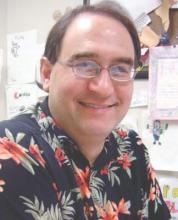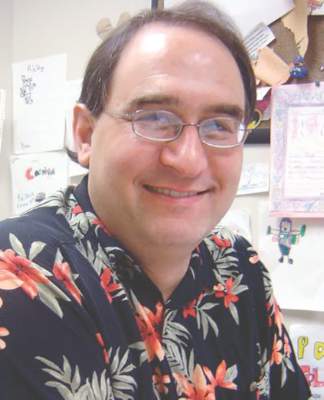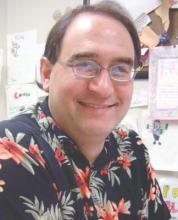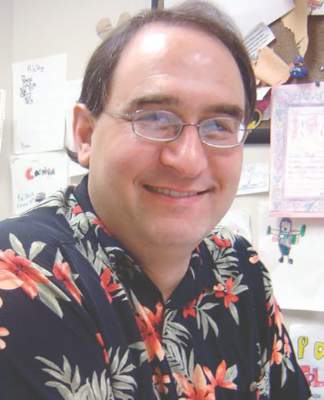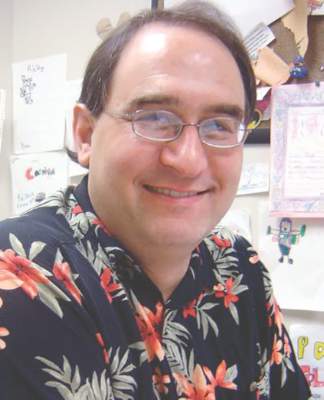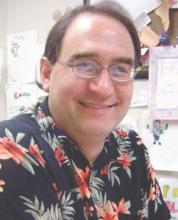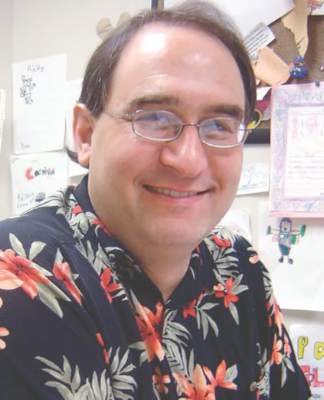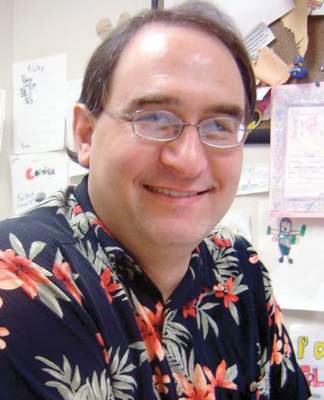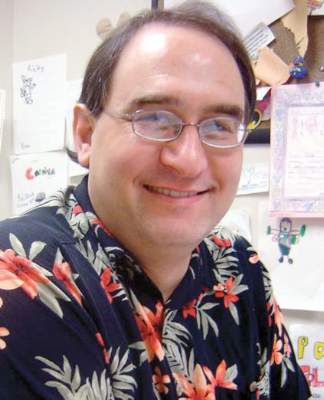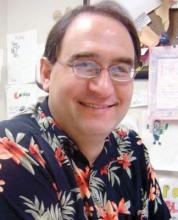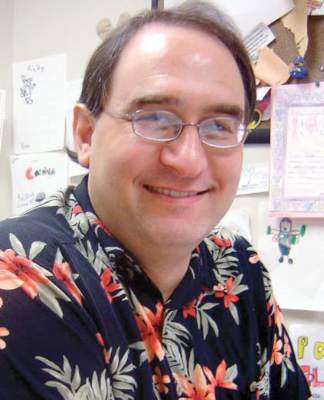User login
Take back a patient who fired you? No way
I refuse to do retreads.
This has nothing to do with my car. If a retread tire gives me the same performance and safety at a lower price, I’m all for it.
Sometimes patients fire me. This is often acrimonious, with them sending me a letter complaining about my competence, bedside manner, personal appearance, staff, office decor, phone system ... whatever. For some reason they weren’t happy with me and instead of just sending a release of records, they decided to let me know in no uncertain terms that they aren’t coming back. We all get these notes.
When I was younger this would really upset me. I took a lot of things personally when I first started out. Now, after almost 20 years on the neurology front lines, it’s just another day. I learned a long time ago that you can’t please everyone or be the doctor they all love. So I fax their chart to wherever they want and move on.
Surprisingly, a few times a year patients will try to come back. Maybe they didn’t like the new doc, or are sorry about their outburst, or can’t find someone else nearby who takes their insurance. So they call and try to make a follow-up. Not surprisingly, they never mention their previous letter. When it’s brought up, they typically claim we misinterpreted it, that they didn’t mean it, or that they’ve decided to forgive me.
This is what I call a retread. A patient who wants to come back after leaving under unpleasant circumstances. I don’t allow it.
To me the doctor-patient relationship is based on trust and objectivity. Once a patient sends an acrimonious letter, it’s very difficult to return to an impartial condition. The fact that they did it once means they may do it again, or think they can get their way with threatening or insulting behavior. These are not things that are good for the connection between us.
So I turn them away. Some just hang up. Others yell, and a few threaten me with legal action. But I don’t back down. Do you want to care for someone who’s done the same to you?
This is a high-stress field. I don’t need the additional distraction of dealing with a toxic medical relationship. If you don’t like me, I have no issue with that. Not everyone does. But once you’ve made that decision, you’re stuck with it.
Dr. Block has a solo neurology practice in Scottsdale, Ariz.
I refuse to do retreads.
This has nothing to do with my car. If a retread tire gives me the same performance and safety at a lower price, I’m all for it.
Sometimes patients fire me. This is often acrimonious, with them sending me a letter complaining about my competence, bedside manner, personal appearance, staff, office decor, phone system ... whatever. For some reason they weren’t happy with me and instead of just sending a release of records, they decided to let me know in no uncertain terms that they aren’t coming back. We all get these notes.
When I was younger this would really upset me. I took a lot of things personally when I first started out. Now, after almost 20 years on the neurology front lines, it’s just another day. I learned a long time ago that you can’t please everyone or be the doctor they all love. So I fax their chart to wherever they want and move on.
Surprisingly, a few times a year patients will try to come back. Maybe they didn’t like the new doc, or are sorry about their outburst, or can’t find someone else nearby who takes their insurance. So they call and try to make a follow-up. Not surprisingly, they never mention their previous letter. When it’s brought up, they typically claim we misinterpreted it, that they didn’t mean it, or that they’ve decided to forgive me.
This is what I call a retread. A patient who wants to come back after leaving under unpleasant circumstances. I don’t allow it.
To me the doctor-patient relationship is based on trust and objectivity. Once a patient sends an acrimonious letter, it’s very difficult to return to an impartial condition. The fact that they did it once means they may do it again, or think they can get their way with threatening or insulting behavior. These are not things that are good for the connection between us.
So I turn them away. Some just hang up. Others yell, and a few threaten me with legal action. But I don’t back down. Do you want to care for someone who’s done the same to you?
This is a high-stress field. I don’t need the additional distraction of dealing with a toxic medical relationship. If you don’t like me, I have no issue with that. Not everyone does. But once you’ve made that decision, you’re stuck with it.
Dr. Block has a solo neurology practice in Scottsdale, Ariz.
I refuse to do retreads.
This has nothing to do with my car. If a retread tire gives me the same performance and safety at a lower price, I’m all for it.
Sometimes patients fire me. This is often acrimonious, with them sending me a letter complaining about my competence, bedside manner, personal appearance, staff, office decor, phone system ... whatever. For some reason they weren’t happy with me and instead of just sending a release of records, they decided to let me know in no uncertain terms that they aren’t coming back. We all get these notes.
When I was younger this would really upset me. I took a lot of things personally when I first started out. Now, after almost 20 years on the neurology front lines, it’s just another day. I learned a long time ago that you can’t please everyone or be the doctor they all love. So I fax their chart to wherever they want and move on.
Surprisingly, a few times a year patients will try to come back. Maybe they didn’t like the new doc, or are sorry about their outburst, or can’t find someone else nearby who takes their insurance. So they call and try to make a follow-up. Not surprisingly, they never mention their previous letter. When it’s brought up, they typically claim we misinterpreted it, that they didn’t mean it, or that they’ve decided to forgive me.
This is what I call a retread. A patient who wants to come back after leaving under unpleasant circumstances. I don’t allow it.
To me the doctor-patient relationship is based on trust and objectivity. Once a patient sends an acrimonious letter, it’s very difficult to return to an impartial condition. The fact that they did it once means they may do it again, or think they can get their way with threatening or insulting behavior. These are not things that are good for the connection between us.
So I turn them away. Some just hang up. Others yell, and a few threaten me with legal action. But I don’t back down. Do you want to care for someone who’s done the same to you?
This is a high-stress field. I don’t need the additional distraction of dealing with a toxic medical relationship. If you don’t like me, I have no issue with that. Not everyone does. But once you’ve made that decision, you’re stuck with it.
Dr. Block has a solo neurology practice in Scottsdale, Ariz.
Vigilance in prescribing narcotics: Unavoidable collateral damage?
Every 3 months I get a letter from the state, showing me how my controlled prescriptions stack up against those of other neurologists here.
I’ve always been in the “normal” range. Which is good, I guess. In this era, no one wants to be seen as running a pill mill.
But when I compare them over the last year, I notice that my narcotic prescriptions have been gradually declining. Am I reducing my scripts subconsciously, knowing that I’m being watched by regulatory agencies?
It’s quite possible. While I haven’t intentionally been cutting back on narcotics, I have been paying closer attention to who I’m writing them for. This has likely led me to use them more sparingly.
The trouble is that pain is a legitimate problem for many, and NSAIDs have numerous safety issues that limit their use. Acetaminophen has hepatic issues. My previous noncontrolled drug of choice, Tramadol, was reclassified as controlled in 2014.
Narcotic abuse and diversion are serious problems that need attention. But there are also people with legitimate noncancer pain who require them to function with a reasonable quality of life. We all have them in our practice. Sorting them out from abusers is never easy.
Unfortunately, the increased vigilance also affects those who need our help. A recent National Public Radio article noted the difficulty of finding a doctor in Montana who is willing to take on pain patients, with the result that some have to travel out of state to get help.
I’m sure they’re not the only ones, especially in states that have a low population density. And not all patients are going to have the financial resources to travel. Or afford the rates of the dwindling number of physicians willing to frequently prescribe narcotics. These people sadly become collateral damage in the drug wars.
Does this mean I’m going to increase my use of narcotics to help all who come to me? No.
Because, in a world where my licensure (and therefore livelihood) is potentially affected by my prescribing habits, I have to put my family first. This doesn’t mean I’m abandoning any of my current or even future patients, but it does mean I’ll be more vigilant on every controlled script I write.
I don’t know anyone who’d do otherwise in today’s climate.
Dr. Block has a solo neurology practice in Scottsdale, Ariz.
Every 3 months I get a letter from the state, showing me how my controlled prescriptions stack up against those of other neurologists here.
I’ve always been in the “normal” range. Which is good, I guess. In this era, no one wants to be seen as running a pill mill.
But when I compare them over the last year, I notice that my narcotic prescriptions have been gradually declining. Am I reducing my scripts subconsciously, knowing that I’m being watched by regulatory agencies?
It’s quite possible. While I haven’t intentionally been cutting back on narcotics, I have been paying closer attention to who I’m writing them for. This has likely led me to use them more sparingly.
The trouble is that pain is a legitimate problem for many, and NSAIDs have numerous safety issues that limit their use. Acetaminophen has hepatic issues. My previous noncontrolled drug of choice, Tramadol, was reclassified as controlled in 2014.
Narcotic abuse and diversion are serious problems that need attention. But there are also people with legitimate noncancer pain who require them to function with a reasonable quality of life. We all have them in our practice. Sorting them out from abusers is never easy.
Unfortunately, the increased vigilance also affects those who need our help. A recent National Public Radio article noted the difficulty of finding a doctor in Montana who is willing to take on pain patients, with the result that some have to travel out of state to get help.
I’m sure they’re not the only ones, especially in states that have a low population density. And not all patients are going to have the financial resources to travel. Or afford the rates of the dwindling number of physicians willing to frequently prescribe narcotics. These people sadly become collateral damage in the drug wars.
Does this mean I’m going to increase my use of narcotics to help all who come to me? No.
Because, in a world where my licensure (and therefore livelihood) is potentially affected by my prescribing habits, I have to put my family first. This doesn’t mean I’m abandoning any of my current or even future patients, but it does mean I’ll be more vigilant on every controlled script I write.
I don’t know anyone who’d do otherwise in today’s climate.
Dr. Block has a solo neurology practice in Scottsdale, Ariz.
Every 3 months I get a letter from the state, showing me how my controlled prescriptions stack up against those of other neurologists here.
I’ve always been in the “normal” range. Which is good, I guess. In this era, no one wants to be seen as running a pill mill.
But when I compare them over the last year, I notice that my narcotic prescriptions have been gradually declining. Am I reducing my scripts subconsciously, knowing that I’m being watched by regulatory agencies?
It’s quite possible. While I haven’t intentionally been cutting back on narcotics, I have been paying closer attention to who I’m writing them for. This has likely led me to use them more sparingly.
The trouble is that pain is a legitimate problem for many, and NSAIDs have numerous safety issues that limit their use. Acetaminophen has hepatic issues. My previous noncontrolled drug of choice, Tramadol, was reclassified as controlled in 2014.
Narcotic abuse and diversion are serious problems that need attention. But there are also people with legitimate noncancer pain who require them to function with a reasonable quality of life. We all have them in our practice. Sorting them out from abusers is never easy.
Unfortunately, the increased vigilance also affects those who need our help. A recent National Public Radio article noted the difficulty of finding a doctor in Montana who is willing to take on pain patients, with the result that some have to travel out of state to get help.
I’m sure they’re not the only ones, especially in states that have a low population density. And not all patients are going to have the financial resources to travel. Or afford the rates of the dwindling number of physicians willing to frequently prescribe narcotics. These people sadly become collateral damage in the drug wars.
Does this mean I’m going to increase my use of narcotics to help all who come to me? No.
Because, in a world where my licensure (and therefore livelihood) is potentially affected by my prescribing habits, I have to put my family first. This doesn’t mean I’m abandoning any of my current or even future patients, but it does mean I’ll be more vigilant on every controlled script I write.
I don’t know anyone who’d do otherwise in today’s climate.
Dr. Block has a solo neurology practice in Scottsdale, Ariz.
Malpractice cases serve to warn about careful use of EHRs
Buy our EHR. Come to a dinner and see our EHR. Our EHR is the best.
I hear that a lot, but am not rushing out to get one. Yes, I have an EHR, but it’s one I designed myself. It works very well for my dinky little practice, and I’m happy with it.
I get notes from practices that use commercial EHRs all the time. They’re usually a pile of gobbledygook, mixing labs, vital signs, medication lists, and ICD-10 codes that tell you absolutely nothing about the patient or the physician’s thought process.
Recently, while reviewing malpractice cases, I saw some where I thought that the EHR was contributing to the problem. Medication lists that showed everything a patient had ever taken, without showing when some were discontinued. Prescribing lists that allowed you to enter only certain doses or schedules, therefore blocking the physician from tailoring them to a specific person’s needs. Physical exam forms that allowed only positive or negative answers, with nowhere to comment on unusual findings.
Of course, I’m just one person, so I thought “maybe it’s just me.” After all, a lot of practices out there use EHRs.
But apparently I’m not the only one. A recent report by one of the nation’s largest doctor-owned malpractice companies found that EHRs may increase the risks of liability and medical errors. In 2013, The Doctor’s Company found 28 closed claims where the EHR contributed, and 26 in just the first half of 2014.
These include both technological problems with the systems and human error in their use. Troubles included erroneous medication dose and schedules, diagnosis-related errors, and the sadly common pitfall of cutting and pasting previous notes without modification.
Medicine has always been, and will always be, a thinking profession, and trying to have computers take part of this job off of us is never good. EHRs, while they have advantages in convenience and space savings, are as imperfect as those who write them.
Patients are not one-size-fits-all, and individual treatments have to be customized in ways that current systems often don’t recognize, sometimes with sad consequences for all involved.
Dr. Block has a solo neurology practice in Scottsdale, Ariz.
Buy our EHR. Come to a dinner and see our EHR. Our EHR is the best.
I hear that a lot, but am not rushing out to get one. Yes, I have an EHR, but it’s one I designed myself. It works very well for my dinky little practice, and I’m happy with it.
I get notes from practices that use commercial EHRs all the time. They’re usually a pile of gobbledygook, mixing labs, vital signs, medication lists, and ICD-10 codes that tell you absolutely nothing about the patient or the physician’s thought process.
Recently, while reviewing malpractice cases, I saw some where I thought that the EHR was contributing to the problem. Medication lists that showed everything a patient had ever taken, without showing when some were discontinued. Prescribing lists that allowed you to enter only certain doses or schedules, therefore blocking the physician from tailoring them to a specific person’s needs. Physical exam forms that allowed only positive or negative answers, with nowhere to comment on unusual findings.
Of course, I’m just one person, so I thought “maybe it’s just me.” After all, a lot of practices out there use EHRs.
But apparently I’m not the only one. A recent report by one of the nation’s largest doctor-owned malpractice companies found that EHRs may increase the risks of liability and medical errors. In 2013, The Doctor’s Company found 28 closed claims where the EHR contributed, and 26 in just the first half of 2014.
These include both technological problems with the systems and human error in their use. Troubles included erroneous medication dose and schedules, diagnosis-related errors, and the sadly common pitfall of cutting and pasting previous notes without modification.
Medicine has always been, and will always be, a thinking profession, and trying to have computers take part of this job off of us is never good. EHRs, while they have advantages in convenience and space savings, are as imperfect as those who write them.
Patients are not one-size-fits-all, and individual treatments have to be customized in ways that current systems often don’t recognize, sometimes with sad consequences for all involved.
Dr. Block has a solo neurology practice in Scottsdale, Ariz.
Buy our EHR. Come to a dinner and see our EHR. Our EHR is the best.
I hear that a lot, but am not rushing out to get one. Yes, I have an EHR, but it’s one I designed myself. It works very well for my dinky little practice, and I’m happy with it.
I get notes from practices that use commercial EHRs all the time. They’re usually a pile of gobbledygook, mixing labs, vital signs, medication lists, and ICD-10 codes that tell you absolutely nothing about the patient or the physician’s thought process.
Recently, while reviewing malpractice cases, I saw some where I thought that the EHR was contributing to the problem. Medication lists that showed everything a patient had ever taken, without showing when some were discontinued. Prescribing lists that allowed you to enter only certain doses or schedules, therefore blocking the physician from tailoring them to a specific person’s needs. Physical exam forms that allowed only positive or negative answers, with nowhere to comment on unusual findings.
Of course, I’m just one person, so I thought “maybe it’s just me.” After all, a lot of practices out there use EHRs.
But apparently I’m not the only one. A recent report by one of the nation’s largest doctor-owned malpractice companies found that EHRs may increase the risks of liability and medical errors. In 2013, The Doctor’s Company found 28 closed claims where the EHR contributed, and 26 in just the first half of 2014.
These include both technological problems with the systems and human error in their use. Troubles included erroneous medication dose and schedules, diagnosis-related errors, and the sadly common pitfall of cutting and pasting previous notes without modification.
Medicine has always been, and will always be, a thinking profession, and trying to have computers take part of this job off of us is never good. EHRs, while they have advantages in convenience and space savings, are as imperfect as those who write them.
Patients are not one-size-fits-all, and individual treatments have to be customized in ways that current systems often don’t recognize, sometimes with sad consequences for all involved.
Dr. Block has a solo neurology practice in Scottsdale, Ariz.
ATV injuries: where risk taking and medical helplessness collide
I. Hate. ATVs.
The modern world is full of potentially dangerous things that we regulate – sometimes by the knowledge of the person giving it (medication) or by age (tobacco, alcohol, cars). Or sometimes we simply ban something altogether (illicit drugs).
After years of neurology practice, I’ve learned to hate ATVs. Outside of firearms, I don’t think I’ve seen any gadget that has such a devastating effect on young lives.
My first medical encounter with one was 20-some years ago during my neurosurgery rotation. It was a man in his mid-20s. He was young, muscular, and clearly in excellent condition. And here he was, flaccid below the neck, and permanently on a ventilator.
I sat at the nurses station for a long time, looking at him and thinking about how a young life can go so horribly wrong so quickly. He hadn’t been drunk at the time. He’d simply had a wreck, the cause of which I never found out. After a few days, he was shipped off to a long-term ventilator facility, and I never saw him again.
Cars are dangerous, too, but are bigger and have gadgets to try to improve safety. ATVs are exposed, with only minimal, if any, protection for their riders. Their use is most typically by the young, meaning a disproportionate number of serious injuries will affect those at the beginning of adulthood.
Sadly, banning ATVs won’t stop injuries. There will always be people who do risky things in the name of being daring and having fun.
What’s changed is that 100 years ago they’d likely have died of their injuries soon afterward. Today they’ll probably survive, debilitated long term because of medical advancements.
These are the situations where I feel helpless. There are all kinds of horrible diseases we handle that have no known cause or cure. That’s one kind of helpless. But the ones with easily avoidable risk factors (ATVs, illegal drugs, tobacco) that occur are just plain frustrating for us and tragic for the patients and families.
In the land of the free, freedom to endanger your own life and health are pretty deeply entrenched. The best we can do is present people with the facts and let them make informed decisions about risky behaviors (sadly, the young often believe they’re immortal). If we ban ATVs, we still won’t stop people from making bad decisions on motorcycles or in cars, or with firearms or illegal drugs.
Like so much in medicine, there are no easy answers, and there likely never will be.
Dr. Block has a solo neurology practice in Scottsdale, Ariz.
I. Hate. ATVs.
The modern world is full of potentially dangerous things that we regulate – sometimes by the knowledge of the person giving it (medication) or by age (tobacco, alcohol, cars). Or sometimes we simply ban something altogether (illicit drugs).
After years of neurology practice, I’ve learned to hate ATVs. Outside of firearms, I don’t think I’ve seen any gadget that has such a devastating effect on young lives.
My first medical encounter with one was 20-some years ago during my neurosurgery rotation. It was a man in his mid-20s. He was young, muscular, and clearly in excellent condition. And here he was, flaccid below the neck, and permanently on a ventilator.
I sat at the nurses station for a long time, looking at him and thinking about how a young life can go so horribly wrong so quickly. He hadn’t been drunk at the time. He’d simply had a wreck, the cause of which I never found out. After a few days, he was shipped off to a long-term ventilator facility, and I never saw him again.
Cars are dangerous, too, but are bigger and have gadgets to try to improve safety. ATVs are exposed, with only minimal, if any, protection for their riders. Their use is most typically by the young, meaning a disproportionate number of serious injuries will affect those at the beginning of adulthood.
Sadly, banning ATVs won’t stop injuries. There will always be people who do risky things in the name of being daring and having fun.
What’s changed is that 100 years ago they’d likely have died of their injuries soon afterward. Today they’ll probably survive, debilitated long term because of medical advancements.
These are the situations where I feel helpless. There are all kinds of horrible diseases we handle that have no known cause or cure. That’s one kind of helpless. But the ones with easily avoidable risk factors (ATVs, illegal drugs, tobacco) that occur are just plain frustrating for us and tragic for the patients and families.
In the land of the free, freedom to endanger your own life and health are pretty deeply entrenched. The best we can do is present people with the facts and let them make informed decisions about risky behaviors (sadly, the young often believe they’re immortal). If we ban ATVs, we still won’t stop people from making bad decisions on motorcycles or in cars, or with firearms or illegal drugs.
Like so much in medicine, there are no easy answers, and there likely never will be.
Dr. Block has a solo neurology practice in Scottsdale, Ariz.
I. Hate. ATVs.
The modern world is full of potentially dangerous things that we regulate – sometimes by the knowledge of the person giving it (medication) or by age (tobacco, alcohol, cars). Or sometimes we simply ban something altogether (illicit drugs).
After years of neurology practice, I’ve learned to hate ATVs. Outside of firearms, I don’t think I’ve seen any gadget that has such a devastating effect on young lives.
My first medical encounter with one was 20-some years ago during my neurosurgery rotation. It was a man in his mid-20s. He was young, muscular, and clearly in excellent condition. And here he was, flaccid below the neck, and permanently on a ventilator.
I sat at the nurses station for a long time, looking at him and thinking about how a young life can go so horribly wrong so quickly. He hadn’t been drunk at the time. He’d simply had a wreck, the cause of which I never found out. After a few days, he was shipped off to a long-term ventilator facility, and I never saw him again.
Cars are dangerous, too, but are bigger and have gadgets to try to improve safety. ATVs are exposed, with only minimal, if any, protection for their riders. Their use is most typically by the young, meaning a disproportionate number of serious injuries will affect those at the beginning of adulthood.
Sadly, banning ATVs won’t stop injuries. There will always be people who do risky things in the name of being daring and having fun.
What’s changed is that 100 years ago they’d likely have died of their injuries soon afterward. Today they’ll probably survive, debilitated long term because of medical advancements.
These are the situations where I feel helpless. There are all kinds of horrible diseases we handle that have no known cause or cure. That’s one kind of helpless. But the ones with easily avoidable risk factors (ATVs, illegal drugs, tobacco) that occur are just plain frustrating for us and tragic for the patients and families.
In the land of the free, freedom to endanger your own life and health are pretty deeply entrenched. The best we can do is present people with the facts and let them make informed decisions about risky behaviors (sadly, the young often believe they’re immortal). If we ban ATVs, we still won’t stop people from making bad decisions on motorcycles or in cars, or with firearms or illegal drugs.
Like so much in medicine, there are no easy answers, and there likely never will be.
Dr. Block has a solo neurology practice in Scottsdale, Ariz.
The times I dig out my thank you note box
I get the occasional heartfelt thank you note from a patient. I also get hate mail, but fortunately the thank yous predominate.
I still have all of them, going back to residency, in an old Nike box. They sit in a closet at home, taken out here and there – on bad days.
You know what I mean. The days where you screwed up, or had an angry patient get on your nerves and/or in your face. Where the schedule was accidentally double booked and you were running behind from the start. When you question your abilities and wonder why you still do this to yourself.
At the end of those days, I go home, dig out the box, and quietly read a few of the notes. Their neatly folded pages of gratitude remind me why I’m here, why I chose this path, why I need to be clear and ready for the patients depending on me the next day. They help me realize that there’s more good than bad in this job; that an unhappy, albeit vocal, few don’t represent most patients; and that I really do know what I’m doing, regardless of what Mr. I’m-going-to-complain-about-you-on-Yelp says.
Of course, there are other reminders of what you have to be thankful for, like families and dogs. But sometimes you need a reminder directly from the people you make a difference for every day, to let you know that this isn’t just a job. It’s why you once volunteered at a hospital, fought through organic chemistry, wrote out 20 (or more) drafts of a personal statement and studied for the MCAT. Because, once upon a time, this job was just a dream.
I don’t spend a lot of time with the notes – maybe 10 minutes reading a randomly pulled handful – but it’s enough to get me out of a funk. Then the old shoe box is carefully returned to my closet. Until I need it again.
Dr. Block has a solo neurology practice in Scottsdale, Ariz.
I get the occasional heartfelt thank you note from a patient. I also get hate mail, but fortunately the thank yous predominate.
I still have all of them, going back to residency, in an old Nike box. They sit in a closet at home, taken out here and there – on bad days.
You know what I mean. The days where you screwed up, or had an angry patient get on your nerves and/or in your face. Where the schedule was accidentally double booked and you were running behind from the start. When you question your abilities and wonder why you still do this to yourself.
At the end of those days, I go home, dig out the box, and quietly read a few of the notes. Their neatly folded pages of gratitude remind me why I’m here, why I chose this path, why I need to be clear and ready for the patients depending on me the next day. They help me realize that there’s more good than bad in this job; that an unhappy, albeit vocal, few don’t represent most patients; and that I really do know what I’m doing, regardless of what Mr. I’m-going-to-complain-about-you-on-Yelp says.
Of course, there are other reminders of what you have to be thankful for, like families and dogs. But sometimes you need a reminder directly from the people you make a difference for every day, to let you know that this isn’t just a job. It’s why you once volunteered at a hospital, fought through organic chemistry, wrote out 20 (or more) drafts of a personal statement and studied for the MCAT. Because, once upon a time, this job was just a dream.
I don’t spend a lot of time with the notes – maybe 10 minutes reading a randomly pulled handful – but it’s enough to get me out of a funk. Then the old shoe box is carefully returned to my closet. Until I need it again.
Dr. Block has a solo neurology practice in Scottsdale, Ariz.
I get the occasional heartfelt thank you note from a patient. I also get hate mail, but fortunately the thank yous predominate.
I still have all of them, going back to residency, in an old Nike box. They sit in a closet at home, taken out here and there – on bad days.
You know what I mean. The days where you screwed up, or had an angry patient get on your nerves and/or in your face. Where the schedule was accidentally double booked and you were running behind from the start. When you question your abilities and wonder why you still do this to yourself.
At the end of those days, I go home, dig out the box, and quietly read a few of the notes. Their neatly folded pages of gratitude remind me why I’m here, why I chose this path, why I need to be clear and ready for the patients depending on me the next day. They help me realize that there’s more good than bad in this job; that an unhappy, albeit vocal, few don’t represent most patients; and that I really do know what I’m doing, regardless of what Mr. I’m-going-to-complain-about-you-on-Yelp says.
Of course, there are other reminders of what you have to be thankful for, like families and dogs. But sometimes you need a reminder directly from the people you make a difference for every day, to let you know that this isn’t just a job. It’s why you once volunteered at a hospital, fought through organic chemistry, wrote out 20 (or more) drafts of a personal statement and studied for the MCAT. Because, once upon a time, this job was just a dream.
I don’t spend a lot of time with the notes – maybe 10 minutes reading a randomly pulled handful – but it’s enough to get me out of a funk. Then the old shoe box is carefully returned to my closet. Until I need it again.
Dr. Block has a solo neurology practice in Scottsdale, Ariz.
Billing for family meetings
Family meetings are never easy.
They’re difficult, and often held to discuss the case of a demented patient. In these situations, the family doesn’t want the patient to hear their concerns or is afraid they’ll be embarrassed or angry. Sometimes getting the patient to the appointment is simply too difficult.
Of course, most discussions of this type can be done by phone ... in theory. In practice, it doesn’t work that way.
It’s the subject matter that makes the impersonal nature of the phone difficult. Families have hard questions and want real answers at these times. A face-to-face meeting, with the human interaction, is often the best way to get things across clearly and still with compassion. It avoids the problem of the phone being passed around, having to repeat yourself to each person, and wondering who just asked what. Very few families, in my experience, want to do this on the phone.
These meetings are never quick, either. Depending on family and circumstances, they can take 30-60 minutes. Getting an insurance company to pay for that time is near impossible. Most plans only want to pay for visits where the patient is actually present, when in these cases the family is trying to avoid that. While there is a Medicare payment code for “advance care planning,” it doesn’t cover treatment discussions or other neurological issues they may bring up, and many patients are on non-Medicare plans.
I bill people for these times and have found that most families are willing to pay. I’m not fond of doing so, and certainly not trying to get rich off of them. But it’s still time that I’m in my office and have to pay my rent, staff, and utilities.
Part of this job – a big part – is helping patients and their loved ones understand and deal with difficult situations. Realistically, this is the best way to do it. Families understand that as well as I do.
Why won’t insurance companies cover them? I suppose their excuse is that they cover the patient, not the questions or emotional needs of their caregivers. Of course, those things are as important to the care of the patient as any treatment, but the bean counters don’t want to pay for them.
That is unfortunate, because someone has to. Good medical care depends on good communication with all involved.
Dr. Block has a solo neurology practice in Scottsdale, Ariz.
Family meetings are never easy.
They’re difficult, and often held to discuss the case of a demented patient. In these situations, the family doesn’t want the patient to hear their concerns or is afraid they’ll be embarrassed or angry. Sometimes getting the patient to the appointment is simply too difficult.
Of course, most discussions of this type can be done by phone ... in theory. In practice, it doesn’t work that way.
It’s the subject matter that makes the impersonal nature of the phone difficult. Families have hard questions and want real answers at these times. A face-to-face meeting, with the human interaction, is often the best way to get things across clearly and still with compassion. It avoids the problem of the phone being passed around, having to repeat yourself to each person, and wondering who just asked what. Very few families, in my experience, want to do this on the phone.
These meetings are never quick, either. Depending on family and circumstances, they can take 30-60 minutes. Getting an insurance company to pay for that time is near impossible. Most plans only want to pay for visits where the patient is actually present, when in these cases the family is trying to avoid that. While there is a Medicare payment code for “advance care planning,” it doesn’t cover treatment discussions or other neurological issues they may bring up, and many patients are on non-Medicare plans.
I bill people for these times and have found that most families are willing to pay. I’m not fond of doing so, and certainly not trying to get rich off of them. But it’s still time that I’m in my office and have to pay my rent, staff, and utilities.
Part of this job – a big part – is helping patients and their loved ones understand and deal with difficult situations. Realistically, this is the best way to do it. Families understand that as well as I do.
Why won’t insurance companies cover them? I suppose their excuse is that they cover the patient, not the questions or emotional needs of their caregivers. Of course, those things are as important to the care of the patient as any treatment, but the bean counters don’t want to pay for them.
That is unfortunate, because someone has to. Good medical care depends on good communication with all involved.
Dr. Block has a solo neurology practice in Scottsdale, Ariz.
Family meetings are never easy.
They’re difficult, and often held to discuss the case of a demented patient. In these situations, the family doesn’t want the patient to hear their concerns or is afraid they’ll be embarrassed or angry. Sometimes getting the patient to the appointment is simply too difficult.
Of course, most discussions of this type can be done by phone ... in theory. In practice, it doesn’t work that way.
It’s the subject matter that makes the impersonal nature of the phone difficult. Families have hard questions and want real answers at these times. A face-to-face meeting, with the human interaction, is often the best way to get things across clearly and still with compassion. It avoids the problem of the phone being passed around, having to repeat yourself to each person, and wondering who just asked what. Very few families, in my experience, want to do this on the phone.
These meetings are never quick, either. Depending on family and circumstances, they can take 30-60 minutes. Getting an insurance company to pay for that time is near impossible. Most plans only want to pay for visits where the patient is actually present, when in these cases the family is trying to avoid that. While there is a Medicare payment code for “advance care planning,” it doesn’t cover treatment discussions or other neurological issues they may bring up, and many patients are on non-Medicare plans.
I bill people for these times and have found that most families are willing to pay. I’m not fond of doing so, and certainly not trying to get rich off of them. But it’s still time that I’m in my office and have to pay my rent, staff, and utilities.
Part of this job – a big part – is helping patients and their loved ones understand and deal with difficult situations. Realistically, this is the best way to do it. Families understand that as well as I do.
Why won’t insurance companies cover them? I suppose their excuse is that they cover the patient, not the questions or emotional needs of their caregivers. Of course, those things are as important to the care of the patient as any treatment, but the bean counters don’t want to pay for them.
That is unfortunate, because someone has to. Good medical care depends on good communication with all involved.
Dr. Block has a solo neurology practice in Scottsdale, Ariz.
Thank you notes: Helpful on bad days
I get the occasional heartfelt thank you note from a patient. I also get hate mail, but fortunately the thank yous predominate.
I still have all of them, going back to residency, in an old Nike box. They sit in a closet at home, taken out here and there. On bad days.
You know what I mean. The days where you screwed up, or had an angry patient get on your nerves and/or in your face. Where the schedule was accidentally double-booked and you were running behind from the start. When you question your abilities and wonder why you are still doing this to yourself.
At the end of those days, I go home, dig out the box, and quietly read a few of the notes. Their neatly folded pages of gratitude remind me why I’m here, why I chose this path, why I need to be clear and ready for the patients depending on me the next day. They help me to realize that there’s more good than bad in this job, and that an unhappy, albeit vocal, few don’t represent most patients. That I really do know what I’m doing, regardless of what Mr. I’m-going-to-complain-about-you-on-Yelp says.
Of course, there are other reminders of what you have be thankfu for, like families and dogs. But sometimes you need a reminder directly from the people for whom you make a difference every day, to let you know that this isn’t just a job. It’s why you once volunteered at a hospital, fought through lorganic chemistry, wrote out 20 (or more) drafts of a personal statement, and studied for the MCAT. Because, once upon a time, this job was just a dream.
I don’t spend a lot of time with the notes – maybe 10 minutes reading a randomly pulled handful, but it’s enough to get me out of a funk. Then the old shoe box is carefully returned to my closet. Until I need it again.
Dr. Block has a solo neurology practice in Scottsdale, Ariz.
I get the occasional heartfelt thank you note from a patient. I also get hate mail, but fortunately the thank yous predominate.
I still have all of them, going back to residency, in an old Nike box. They sit in a closet at home, taken out here and there. On bad days.
You know what I mean. The days where you screwed up, or had an angry patient get on your nerves and/or in your face. Where the schedule was accidentally double-booked and you were running behind from the start. When you question your abilities and wonder why you are still doing this to yourself.
At the end of those days, I go home, dig out the box, and quietly read a few of the notes. Their neatly folded pages of gratitude remind me why I’m here, why I chose this path, why I need to be clear and ready for the patients depending on me the next day. They help me to realize that there’s more good than bad in this job, and that an unhappy, albeit vocal, few don’t represent most patients. That I really do know what I’m doing, regardless of what Mr. I’m-going-to-complain-about-you-on-Yelp says.
Of course, there are other reminders of what you have be thankfu for, like families and dogs. But sometimes you need a reminder directly from the people for whom you make a difference every day, to let you know that this isn’t just a job. It’s why you once volunteered at a hospital, fought through lorganic chemistry, wrote out 20 (or more) drafts of a personal statement, and studied for the MCAT. Because, once upon a time, this job was just a dream.
I don’t spend a lot of time with the notes – maybe 10 minutes reading a randomly pulled handful, but it’s enough to get me out of a funk. Then the old shoe box is carefully returned to my closet. Until I need it again.
Dr. Block has a solo neurology practice in Scottsdale, Ariz.
I get the occasional heartfelt thank you note from a patient. I also get hate mail, but fortunately the thank yous predominate.
I still have all of them, going back to residency, in an old Nike box. They sit in a closet at home, taken out here and there. On bad days.
You know what I mean. The days where you screwed up, or had an angry patient get on your nerves and/or in your face. Where the schedule was accidentally double-booked and you were running behind from the start. When you question your abilities and wonder why you are still doing this to yourself.
At the end of those days, I go home, dig out the box, and quietly read a few of the notes. Their neatly folded pages of gratitude remind me why I’m here, why I chose this path, why I need to be clear and ready for the patients depending on me the next day. They help me to realize that there’s more good than bad in this job, and that an unhappy, albeit vocal, few don’t represent most patients. That I really do know what I’m doing, regardless of what Mr. I’m-going-to-complain-about-you-on-Yelp says.
Of course, there are other reminders of what you have be thankfu for, like families and dogs. But sometimes you need a reminder directly from the people for whom you make a difference every day, to let you know that this isn’t just a job. It’s why you once volunteered at a hospital, fought through lorganic chemistry, wrote out 20 (or more) drafts of a personal statement, and studied for the MCAT. Because, once upon a time, this job was just a dream.
I don’t spend a lot of time with the notes – maybe 10 minutes reading a randomly pulled handful, but it’s enough to get me out of a funk. Then the old shoe box is carefully returned to my closet. Until I need it again.
Dr. Block has a solo neurology practice in Scottsdale, Ariz.
The brief thrill of catching a zebra
Life in a general neurology practice, over time, becomes a routine. Migraines, dementia, strokes, neuropathy, back and neck pain … the things that are, as they say, the “bread and butter” of the job. So much of this job is spent thinking inside the box that some days it’s hard to remember we have to keep an eye on the outside of it, too.
Unlike my academic colleagues, I’m not a huge fan of zebras. I prefer my life, practice, and cases uncomplicated and straightforward. Horses suit me better. But, like everyone else in this job, I occasionally find a zebra. Recently, a fellow was referred to me for imbalance, but his appearance concerned me enough that I thought something outside the usual considerations was there. When all was said and done, he’d been diagnosed with myotonic dystrophy.
And, as much as uncommon diagnoses can drive you nuts, when you stumble across one AND get it right, it’s exhilarating – like a home run, a 3-point shot, or an interception returned for a touchdown. That’s especially true if it’s something treatable, and you can make a real difference in someone’s life.
A key part of medical training is the differential game – where an attending repeatedly grills you with the question, “And what else could this be?” making you think of both obvious and far-fetched possibilities.
This part is probably one of the most hated during training, yet very appreciated years later. Where I trained, it was the focus of a much-dreaded conference held every Thursday morning around a huge table. You were forced to think of the unordinary things that are the pitfalls of medicine. Today, I realize how valuable those 90-minute, weekly sessions were.
Although none of us realizes it at the time, those are the things that make you a better doctor. The brief thrill of catching a zebra never gets old. And it’s always coupled with a deep appreciation for those who taught me to hunt them.
Dr. Block has a solo neurology practice in Scottsdale, Ariz.
Life in a general neurology practice, over time, becomes a routine. Migraines, dementia, strokes, neuropathy, back and neck pain … the things that are, as they say, the “bread and butter” of the job. So much of this job is spent thinking inside the box that some days it’s hard to remember we have to keep an eye on the outside of it, too.
Unlike my academic colleagues, I’m not a huge fan of zebras. I prefer my life, practice, and cases uncomplicated and straightforward. Horses suit me better. But, like everyone else in this job, I occasionally find a zebra. Recently, a fellow was referred to me for imbalance, but his appearance concerned me enough that I thought something outside the usual considerations was there. When all was said and done, he’d been diagnosed with myotonic dystrophy.
And, as much as uncommon diagnoses can drive you nuts, when you stumble across one AND get it right, it’s exhilarating – like a home run, a 3-point shot, or an interception returned for a touchdown. That’s especially true if it’s something treatable, and you can make a real difference in someone’s life.
A key part of medical training is the differential game – where an attending repeatedly grills you with the question, “And what else could this be?” making you think of both obvious and far-fetched possibilities.
This part is probably one of the most hated during training, yet very appreciated years later. Where I trained, it was the focus of a much-dreaded conference held every Thursday morning around a huge table. You were forced to think of the unordinary things that are the pitfalls of medicine. Today, I realize how valuable those 90-minute, weekly sessions were.
Although none of us realizes it at the time, those are the things that make you a better doctor. The brief thrill of catching a zebra never gets old. And it’s always coupled with a deep appreciation for those who taught me to hunt them.
Dr. Block has a solo neurology practice in Scottsdale, Ariz.
Life in a general neurology practice, over time, becomes a routine. Migraines, dementia, strokes, neuropathy, back and neck pain … the things that are, as they say, the “bread and butter” of the job. So much of this job is spent thinking inside the box that some days it’s hard to remember we have to keep an eye on the outside of it, too.
Unlike my academic colleagues, I’m not a huge fan of zebras. I prefer my life, practice, and cases uncomplicated and straightforward. Horses suit me better. But, like everyone else in this job, I occasionally find a zebra. Recently, a fellow was referred to me for imbalance, but his appearance concerned me enough that I thought something outside the usual considerations was there. When all was said and done, he’d been diagnosed with myotonic dystrophy.
And, as much as uncommon diagnoses can drive you nuts, when you stumble across one AND get it right, it’s exhilarating – like a home run, a 3-point shot, or an interception returned for a touchdown. That’s especially true if it’s something treatable, and you can make a real difference in someone’s life.
A key part of medical training is the differential game – where an attending repeatedly grills you with the question, “And what else could this be?” making you think of both obvious and far-fetched possibilities.
This part is probably one of the most hated during training, yet very appreciated years later. Where I trained, it was the focus of a much-dreaded conference held every Thursday morning around a huge table. You were forced to think of the unordinary things that are the pitfalls of medicine. Today, I realize how valuable those 90-minute, weekly sessions were.
Although none of us realizes it at the time, those are the things that make you a better doctor. The brief thrill of catching a zebra never gets old. And it’s always coupled with a deep appreciation for those who taught me to hunt them.
Dr. Block has a solo neurology practice in Scottsdale, Ariz.
Passing up a product endorsement
Yesterday, my secretary passed a message that someone from television had called with a question. Not knowing what to expect, but trying to be helpful, I returned the call that afternoon.
The fellow was nice enough, and explained he worked for a marketing company. A vitamin company had hired him to promote an over-the-counter supplement to treat Alzheimer’s disease, and he was looking for a neurologist to endorse it in an infomercial. He said I’d be compensated $5,000-$10,000 for the spot.
That’s a pretty decent chunk of change. I could use it. For a few seconds I hemmed and hawed, trying to think of a way to rationalize it. Then I realized ... I just couldn’t. I politely told him “No,” and got off the phone.
I know they’ll find someone to do it. But I just can’t. I’m sure they have some data to back it up, but crappy research papers are a dime a dozen.
I spend a lot of time explaining studies and data to those affected by this terrible disease. I’m trying to help them work their way through a maze of tests, treatments of limited benefit, and reasonable expectations.
Sadly, as with all tragic and incurable diseases, there’s no shortage of hucksters trying to take advantage of the desperate. Part of my job is to help people understand this. They bring in ads from magazines and newspaper promising miracle cures for a host of awful illnesses. I can’t stop them from buying it, but I want to do my best to warn them it’s a scam.
I can’t do that if I switch sides. Once I start plugging non–FDA-approved, non–clinically meaningful junk on late-night TV, I’ve joined the snake-oil salesmen of yesteryear.
I owe my patients better than that. They trust me to help them and to do what’s right.
Like everyone else, I don’t have a perfect reputation, but outside of my online reviews, I think I’m reasonably well thought of in the local community. A decent reputation takes years to build and one crappy decision to lose. I don’t want to do that either.
And under all that, I still have to believe in myself. That everyday I’m trying to do what’s right for people. Because if I’m not doing that, it’s time to hang up my reflex hammer. The first person I have to face every morning is in the mirror. I want to be able to look at him and still believe he’s doing the best he can for those who need his help.
Dr. Block has a solo neurology practice in Scottsdale, Ariz.
Yesterday, my secretary passed a message that someone from television had called with a question. Not knowing what to expect, but trying to be helpful, I returned the call that afternoon.
The fellow was nice enough, and explained he worked for a marketing company. A vitamin company had hired him to promote an over-the-counter supplement to treat Alzheimer’s disease, and he was looking for a neurologist to endorse it in an infomercial. He said I’d be compensated $5,000-$10,000 for the spot.
That’s a pretty decent chunk of change. I could use it. For a few seconds I hemmed and hawed, trying to think of a way to rationalize it. Then I realized ... I just couldn’t. I politely told him “No,” and got off the phone.
I know they’ll find someone to do it. But I just can’t. I’m sure they have some data to back it up, but crappy research papers are a dime a dozen.
I spend a lot of time explaining studies and data to those affected by this terrible disease. I’m trying to help them work their way through a maze of tests, treatments of limited benefit, and reasonable expectations.
Sadly, as with all tragic and incurable diseases, there’s no shortage of hucksters trying to take advantage of the desperate. Part of my job is to help people understand this. They bring in ads from magazines and newspaper promising miracle cures for a host of awful illnesses. I can’t stop them from buying it, but I want to do my best to warn them it’s a scam.
I can’t do that if I switch sides. Once I start plugging non–FDA-approved, non–clinically meaningful junk on late-night TV, I’ve joined the snake-oil salesmen of yesteryear.
I owe my patients better than that. They trust me to help them and to do what’s right.
Like everyone else, I don’t have a perfect reputation, but outside of my online reviews, I think I’m reasonably well thought of in the local community. A decent reputation takes years to build and one crappy decision to lose. I don’t want to do that either.
And under all that, I still have to believe in myself. That everyday I’m trying to do what’s right for people. Because if I’m not doing that, it’s time to hang up my reflex hammer. The first person I have to face every morning is in the mirror. I want to be able to look at him and still believe he’s doing the best he can for those who need his help.
Dr. Block has a solo neurology practice in Scottsdale, Ariz.
Yesterday, my secretary passed a message that someone from television had called with a question. Not knowing what to expect, but trying to be helpful, I returned the call that afternoon.
The fellow was nice enough, and explained he worked for a marketing company. A vitamin company had hired him to promote an over-the-counter supplement to treat Alzheimer’s disease, and he was looking for a neurologist to endorse it in an infomercial. He said I’d be compensated $5,000-$10,000 for the spot.
That’s a pretty decent chunk of change. I could use it. For a few seconds I hemmed and hawed, trying to think of a way to rationalize it. Then I realized ... I just couldn’t. I politely told him “No,” and got off the phone.
I know they’ll find someone to do it. But I just can’t. I’m sure they have some data to back it up, but crappy research papers are a dime a dozen.
I spend a lot of time explaining studies and data to those affected by this terrible disease. I’m trying to help them work their way through a maze of tests, treatments of limited benefit, and reasonable expectations.
Sadly, as with all tragic and incurable diseases, there’s no shortage of hucksters trying to take advantage of the desperate. Part of my job is to help people understand this. They bring in ads from magazines and newspaper promising miracle cures for a host of awful illnesses. I can’t stop them from buying it, but I want to do my best to warn them it’s a scam.
I can’t do that if I switch sides. Once I start plugging non–FDA-approved, non–clinically meaningful junk on late-night TV, I’ve joined the snake-oil salesmen of yesteryear.
I owe my patients better than that. They trust me to help them and to do what’s right.
Like everyone else, I don’t have a perfect reputation, but outside of my online reviews, I think I’m reasonably well thought of in the local community. A decent reputation takes years to build and one crappy decision to lose. I don’t want to do that either.
And under all that, I still have to believe in myself. That everyday I’m trying to do what’s right for people. Because if I’m not doing that, it’s time to hang up my reflex hammer. The first person I have to face every morning is in the mirror. I want to be able to look at him and still believe he’s doing the best he can for those who need his help.
Dr. Block has a solo neurology practice in Scottsdale, Ariz.
Those annoying EHR pop-up windows
In 1986, the United States and Canada mandated the adoption of a center brake light on all new cars. Studies had shown that this was better at getting attention than the two side lights alone, and reduced collisions.
Of course, as the years went by the safety benefit gradually faded. It never returned to the previous level, but clearly, as people got used to it, the new light faded into the background of their attention.
Today, we have electronic health record (EHR) systems that use all kinds of pop-up warnings to check INRs, to give flu shots, to consider COPD in the differential ... a million things. I’m sure the attorneys love them. (“Doctor, since the computer clearly warned you about this, why did you click ‘ignore’ and move on?”)
I don’t use one of those systems, but I talk to plenty of doctors who do. Initially, it was interesting and got their attention, then became annoying. Each pop-up window interrupted the chain of thought, distracting them from the task at hand: patient care. As time went on, they just began ignoring them. It’s easier to click “cancel” than it is have to think through something you’ve probably already considered.
So, like the center brake light, the well-intentioned pop-up window is ignored and pushed to the far side of your attention span.
Do these things improve quality of care? Probably no more than the center brake light reduces car accidents these days. They’re likely useful in training, to remind medical students and residents of things that are important, but beyond that would be a tough case to make.
I’m not saying attending physicians are infallible. We all make our share of mistakes in this world. But medicine is not a one-size-fits-all field. The EHRs, at least at present, can’t take into account as we do all the variables of each patient’s personality, social situation, compliance history, medication tolerance issues, and other factors.
Not only that, but the pop-up window saying, “Have you considered this?” is no less distracting than having to take a phone call during a visit. It’s intrusive, throws your train of thought temporarily onto another track, and requires a minute to refocus on the task at hand. In that time, you may have forgotten something equally, if not more important. Or missed some critical piece of information the patient mentioned.
Dr. Block has a solo neurology practice in Scottsdale, Ariz.
In 1986, the United States and Canada mandated the adoption of a center brake light on all new cars. Studies had shown that this was better at getting attention than the two side lights alone, and reduced collisions.
Of course, as the years went by the safety benefit gradually faded. It never returned to the previous level, but clearly, as people got used to it, the new light faded into the background of their attention.
Today, we have electronic health record (EHR) systems that use all kinds of pop-up warnings to check INRs, to give flu shots, to consider COPD in the differential ... a million things. I’m sure the attorneys love them. (“Doctor, since the computer clearly warned you about this, why did you click ‘ignore’ and move on?”)
I don’t use one of those systems, but I talk to plenty of doctors who do. Initially, it was interesting and got their attention, then became annoying. Each pop-up window interrupted the chain of thought, distracting them from the task at hand: patient care. As time went on, they just began ignoring them. It’s easier to click “cancel” than it is have to think through something you’ve probably already considered.
So, like the center brake light, the well-intentioned pop-up window is ignored and pushed to the far side of your attention span.
Do these things improve quality of care? Probably no more than the center brake light reduces car accidents these days. They’re likely useful in training, to remind medical students and residents of things that are important, but beyond that would be a tough case to make.
I’m not saying attending physicians are infallible. We all make our share of mistakes in this world. But medicine is not a one-size-fits-all field. The EHRs, at least at present, can’t take into account as we do all the variables of each patient’s personality, social situation, compliance history, medication tolerance issues, and other factors.
Not only that, but the pop-up window saying, “Have you considered this?” is no less distracting than having to take a phone call during a visit. It’s intrusive, throws your train of thought temporarily onto another track, and requires a minute to refocus on the task at hand. In that time, you may have forgotten something equally, if not more important. Or missed some critical piece of information the patient mentioned.
Dr. Block has a solo neurology practice in Scottsdale, Ariz.
In 1986, the United States and Canada mandated the adoption of a center brake light on all new cars. Studies had shown that this was better at getting attention than the two side lights alone, and reduced collisions.
Of course, as the years went by the safety benefit gradually faded. It never returned to the previous level, but clearly, as people got used to it, the new light faded into the background of their attention.
Today, we have electronic health record (EHR) systems that use all kinds of pop-up warnings to check INRs, to give flu shots, to consider COPD in the differential ... a million things. I’m sure the attorneys love them. (“Doctor, since the computer clearly warned you about this, why did you click ‘ignore’ and move on?”)
I don’t use one of those systems, but I talk to plenty of doctors who do. Initially, it was interesting and got their attention, then became annoying. Each pop-up window interrupted the chain of thought, distracting them from the task at hand: patient care. As time went on, they just began ignoring them. It’s easier to click “cancel” than it is have to think through something you’ve probably already considered.
So, like the center brake light, the well-intentioned pop-up window is ignored and pushed to the far side of your attention span.
Do these things improve quality of care? Probably no more than the center brake light reduces car accidents these days. They’re likely useful in training, to remind medical students and residents of things that are important, but beyond that would be a tough case to make.
I’m not saying attending physicians are infallible. We all make our share of mistakes in this world. But medicine is not a one-size-fits-all field. The EHRs, at least at present, can’t take into account as we do all the variables of each patient’s personality, social situation, compliance history, medication tolerance issues, and other factors.
Not only that, but the pop-up window saying, “Have you considered this?” is no less distracting than having to take a phone call during a visit. It’s intrusive, throws your train of thought temporarily onto another track, and requires a minute to refocus on the task at hand. In that time, you may have forgotten something equally, if not more important. Or missed some critical piece of information the patient mentioned.
Dr. Block has a solo neurology practice in Scottsdale, Ariz.
